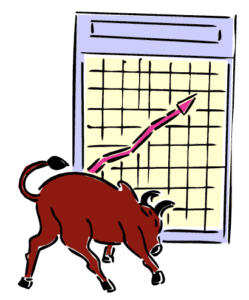Share This Article
 Bonds, CDs, futures, oh my! There are so many investing terms out there, it’s hard to know what’s-what. This month, we break down nine common tools to help you understand what investing is all about!
Bonds, CDs, futures, oh my! There are so many investing terms out there, it’s hard to know what’s-what. This month, we break down nine common tools to help you understand what investing is all about!
Bonds A bond is an IOU. By buying bonds, the bondholder lends money to a company or a government. In return, the borrower promises to repay the amount borrowed with interest. Corporate bonds are issued by public companies, while municipal bonds are issued by state or local governments. If the business fails, bondholders are paid back before stockholders, so bonds have less risk than stocks. Bond vary as to risk and return, but in general bonds offer medium risk.
Certificates of Deposit Often referred to as CDs, these investments are purchased for a specific amount of money at a fixed rate of interest for a fixed amount of time. CDs may be purchased for as little as seven days or as long as five to ten years. The longer the time, the higher the interest rate. If CDs are cashed in before the specified time, there is a penalty charge. Less liquid than a savings account, but has a higher return than savings. CDs are considered low risk, because you get back the original amount deposited no matter what.
Futures A futures contract is a deal made today to take place in the future. Futures contracts deal in commodities, which are products such as corn, soybeans, wheat, cattle, gold, crude oil, and foreign currencies. The investor contracts to buy or sell a commodity at a future date, guessing on the value of the commodity on that future date.
Collectibles Collectibles could include antiques, art, baseball cards, dolls, stamps, precious metals or gems. The investment is not very liquid because collectibles become more valuable the longer the investor holds onto them, and then the investor must find a buyer. The risk on collectibles is high.
Government Obligations Government Obligations are like bonds– an IOU certifying that you loaned money to the U.S. government. Examples of government obligations include Treasury bonds, bills, notes and savings bonds. The government promises to repay the investor with some return. Even if the U.S. government goes bankrupt, it is obligated to repay bonds.
 Mutual Funds A mutual fund is a professionally managed portfolio made up of stocks, bonds, and other investments. A fund manager buys and sells securities for the fund’s shareholders. Because a mutual fund includes many different securities, the risk is lower than investing in stocks and bonds that depend on the success of one company or government unit. If some securities in the fund do poorly, others may perform well. In general, mutual funds offer moderate risk and return, although some funds offer higher risk than others.
Mutual Funds A mutual fund is a professionally managed portfolio made up of stocks, bonds, and other investments. A fund manager buys and sells securities for the fund’s shareholders. Because a mutual fund includes many different securities, the risk is lower than investing in stocks and bonds that depend on the success of one company or government unit. If some securities in the fund do poorly, others may perform well. In general, mutual funds offer moderate risk and return, although some funds offer higher risk than others.
Real Estate Buying a home or property is an investment. Over time the real estate may go up in value. Ownership of rental properties and commercial buildings requires time and skill. The investment is not very liquid because the investor must first find a buyer. In general, real estate is considered a moderate risk.
Savings Accounts Accounts offered by banks, credit unions, and savings and loan associations provide easy access to funds and pay interest. Savings accounts offer the most liquid type of investment, with low risk, and therefore, low interest. If placed in an institution insured by FDIC, money deposited is safe up to $1000,000.
Now that you know a little more about these different types of investments, use this worksheet to help you split them into categories: high-risk, medium-risk, and low-risk. HINT: there are three in each category!
Are you looking to make your money work for you? Check out Young Americans Bank, member FDIC! You’ll find Savings Accounts and CDs that will help your money grow!



